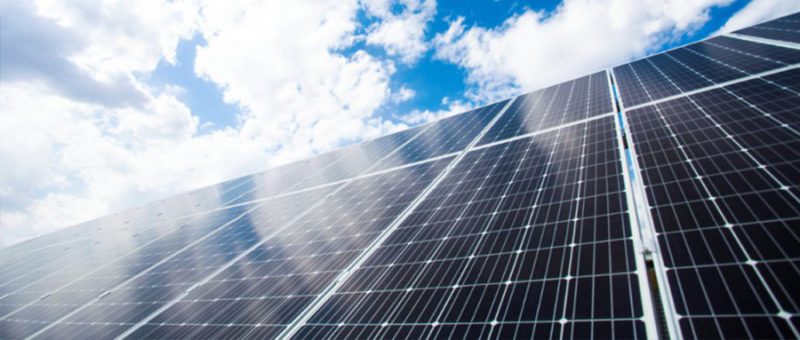PVTIME – Renewable capacity additions reached a significant milestone in 2023, with an increase of almost 50% to nearly 510GW. This growth rate is the fastest in the past two decades and was driven by China’s solar PV market, as noted by the IEA. China’s acceleration was exceptional, with newly added solar power of 216.88GW in 2023, which is more than the entire world added in 2022.

Despite a significant increase in renewable capacity, particularly in solar power, in 2023, there are still many growing risks as we move towards 2024. The photovoltaic (PV) market is at a critical point for future development, with many impacts caused by policies, prices, and production capacity. Some PV manufacturers are expanding their production capacity to reduce costs, while others are shifting their strategy and closing their production base.
Polysilicon is a crucial raw material for the PV industry and is located at the upstream of its supply chain. Its production requires high technological expertise and significant long-term investment. More than a decade ago, China’s polysilicon production accounted for less than 5% of the global production, with the remaining 95% produced by Germany, the United States, Japan, and South Korea. Enterprises such as Wacker in Germany, OCI in South Korea, REC in Norway, Hemlock and SunEdison (MEMC) in the United States, and Tokuyama in Japan are among the world’s leading silicon suppliers.
However, in the last decade, Chinese polysilicon manufacturers have gradually taken the lead due to technological upgrades, improved quality and mass production capabilities, increased sales, and reduced costs. Currently, GCL-Poly and Yongxiang (Tongwei) are the top two global polysilicon manufacturers, with Wacker ranking third. Other Chinese companies, such as Xinte, Daqo, East Hope, and Qinghai Lihao, are also experiencing rapid growth. By the end of 2023, China was responsible for producing 95-97% of the world’s polysilicon.
Wacker’s polysilicon business has experienced a decline in revenue over the past few years. In Q3 2023, Wacker’s polysilicon sales decreased by 45% compared to the previous year.
In November 2023, Singapore’s REC Group announced the closure of its polysilicon plants in Kristiansand and Porsgrunn, Norway, which had restarted in March 2023. According to NRK, a Norwegian TV channel, the cumulative loss of REC’s business in Norway has reached 335 million Norwegian kroner. The CEO of REC stated that the production costs of their polysilicon are too high to be sustainable. For instance, the cost of electricity in Norway is expensive, with the company paying around 4 NOK/kWh, while polysilicon enterprises in China pay only 0.4 NOK/kWh. This significant difference in cost greatly reduces REC’s competitiveness in polysilicon production.
In early 2020, OCI, the South Korean polysilicon plant, announced the closure of two non-competitive plants in South Korea, retaining only the Malaysian plant. News broke in mid-2021 that OCI was considering expanding its Malaysian polysilicon plant from 30,000 to 95,000 tonnes. However, no progress has been made subsequently.
The situations are comparable among solar module manufacturers.
Ten years ago, First Solar was the leading supplier of solar modules, while Sunpower in the US, Sharp and Kyocera in Japan, and Hanwha in Korea were major global producers of solar modules.
Currently, China’s photovoltaic companies are on the rise, despite various trade protection measures launched by Europe and the United States to support local PV enterprises. In 2022, only two companies outside of China, First Solar and Hanwha Qcells, were among the top ten module manufacturers in the world.
Hanwha Qcells has decided to close its 3.5GW module plant in South Korea by the end of 2023, but it will still retain the South Korean plant responsible for the production of TOPCon and has launched a pilot line for perovskite tandem products.
Swiss photovoltaic module manufacturer, Meyer Burger, has announced the closure of its solar module production site in Germany. Furthermore, the company plans to begin closing some of its factories in eastern Germany as early as April.
The reason given for the closure is the lack of effective measures to create a fair market. Meyer Burger estimates total sales to reach CHF135 million ($156.5 million) in 2023, with an operating loss of at least CHF126 million. The main cause of this situation is attributed to a sharp increase in overcapacity in China and trade restrictions imposed by the US and India. This has led to severe oversupply and unprecedented distortions in the European solar market in 2023.
It is unfortunate to learn that Germany’s last major solar manufacturer is set to close, along with Europe’s largest PV module factory. This closure will have a significant negative impact on the PV manufacturing industry in Germany and Europe as a whole.
First Solar has expanded its capacity significantly in the last two years, investing $4.1 billion in expansions since 2020. By the end of 2023, its operating capacity have grown from 6GW to 16GW. In July 2023, First Solar announced plans to open a fifth plant in the United States. In January 2024, First Solar announced its plan to invest $700 million in a 3.3GW module plant in India. Production is scheduled to begin in 2026. The company aims to reach a solar module production capacity of 26GW by 2026.
Despite First Solar’s strong willingness to expand production, there is still a significant gap compared to the production capacity of Chinese PV companies. In 2023, First Solar’s estimated shipment volume of solar modules is 11.8-12.3GW. However, major Chinese solar module producers such as Yingli Solar, DMEGC, Suntech Power, and GCLSI, all shipped 12GW or more respectively. This makes it difficult for First Solar to remain in the top ten of the solar module shipment list. The final rankings in PVBL will be revealed after the companies’ financial reports are released.
The influence of overseas PV giants has diminished more than expected. Former leading PV inverter producers, such as Emerson, ABB, and GE, have ceased their inverter business. Current major players, including SolarEdge and Enphase, have announced layoff plans.
In October 2023, Solaredge released its third-quarter results, and subsequently, the stock price fell by 36.5%. Overseas investment analysts downgraded its valuation and that of its peers. SolarEdge’s total revenue is primarily generated from the European market (60%), followed by the U.S. market (30%), and other regions (10%). However, due to excess inventory and weak PV demand, the demand for inverters in the European market has slowed down, resulting in lower-than-expected performance for SolarEdge.
Enphase reported that high inventory levels at companies like itself were caused by the slowdown in solar power growth in Europe. Additionally, metering reforms in California, the largest U.S. solar market, and high U.S. lending rates have led to a sharp drop in installed PV demand, weakening U.S. demand for PV inverters. Enphase aims to reduce its global excess inventory in 2024 while relying on the Federal Reserve to cut interest rates next year.
And for Chinese enterprises who seem in the competitive advantage, the overseas market is a hot land that must be fought for. Chen Gang, chairman of AIKO, once told the media that under the background of globalisation, it is an inevitable choice for Chinese solar PV enterprises to go overseas, and they have to stay the global top position in order to survive.
Indeed, most Chinese PV manufacturers expect to enter a larger market, but they need to evaluate the profit and risks of the global PV market, while dealing with the negative impact of geopolitical issues, post-pandemic and other multiple problems. The international community is also re-examining the resilience and security of the global PV supply chain. Currently, more than 80% of the upstream production capacity of the global PV supply chain is located in China, so Europe and the United States are promoting the localisation of the renewable energy industry chain for supply security. And some Southeast Asian countries are also considering localising the PV supply chain to join hands in promoting low-carbon and clean energy goals for the world, with cost reduction, economic growth and increased employment.
Installed capacity is growing, but market conditions are neither stable nor healthy. China currently produces 80-85% of the world’s photovoltaic modules and more than 70% of solar crystalline silicon, such a high proportion is unsustainable, and the future may be in the formation of an equilibrium point between 50 and 80%.
Some of the Chinese PV companies are positive and optimistic about building factories overseas. Liu Hanyuan, chairman of Tongwei Group, pointed out that the energy demand for sustainable development and favourable local policies will help Chinese solar energy providers to set up factories overseas to provide solutions and services as soon as possible with low transportation costs and better ecology for the region. In order to achieve a balanced global energy transition goal, it is important to join hands in the deployment of renewable energy with innovative technology, reliable products and low cost from China.

Scan the QR code to follow PVTIME official account on Wechat for latest news on PV+ES











